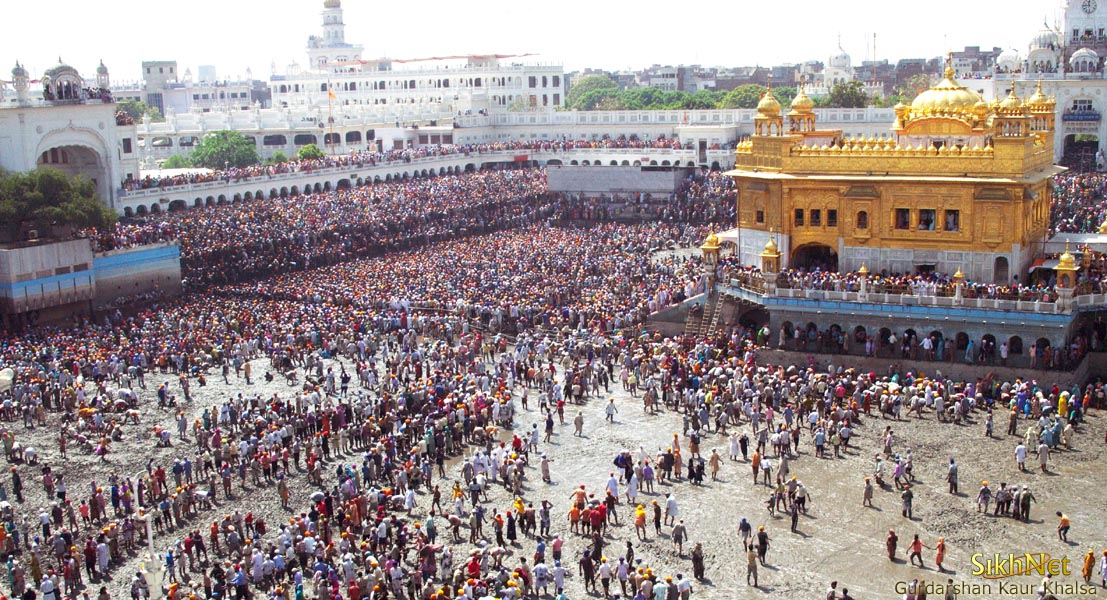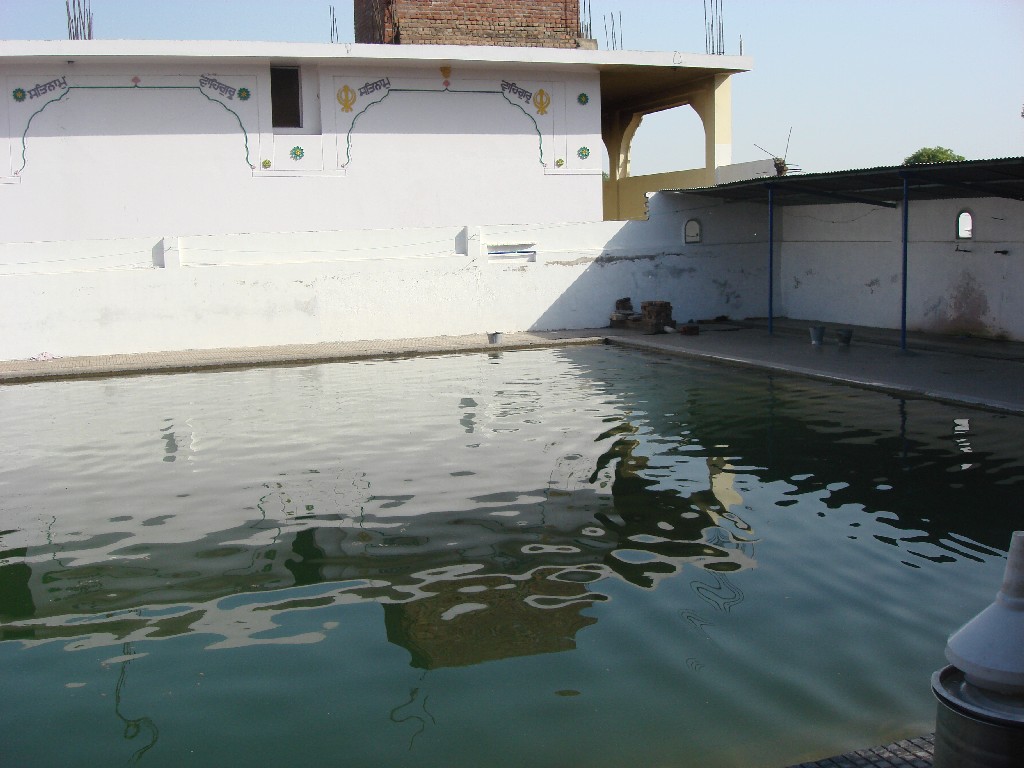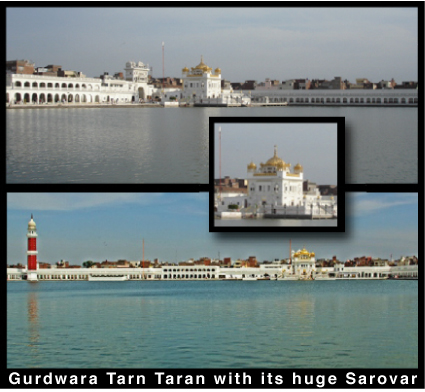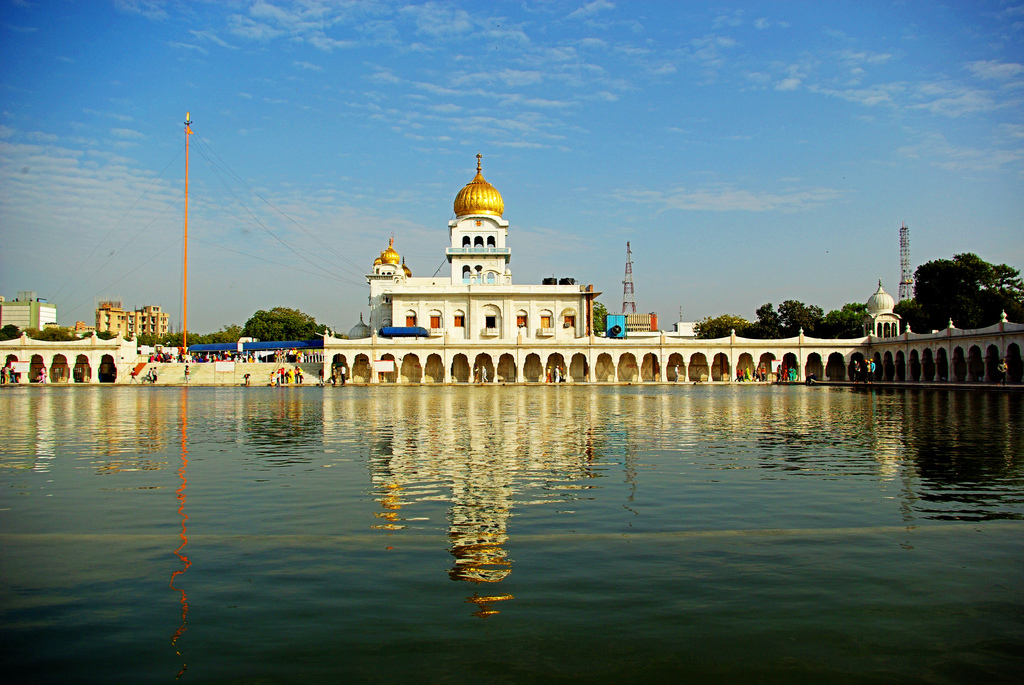Sarovar
Sarovar is a Punjabi terms used for a pool. Many historic Gurdwaras in India and Pakistan have a Sarovar incorporated in the Gurdwara building complex. The most prominent Sikh Gurudwara is the Harimander Sahib in Amritsar. A very large pool or Sarovar surrounds the central temple building. The devotees who visit these shrines will bathe in these pools as the Sikhs believe that spiritual and worldly benefits are gained by immersing in the holy waters of these Sarovars.
It has been a common practise to drain and cleanse these Sarovars on a regular basis. The Punjabi term used for this function of cleaning these pools is Kar Seva. The Harimander Sahib complex last undertook Kar Seva in 2004. In addition to the Seva, a new system of filtration was also installed following the removal of the silt from the drained pool. Fish are also present in these Sarovars to keep the water clean and pure.
Sacred Sarovar
At Gurdwara Puddha Sahib, a famous Sikh Gurdwara located in Gobindgarh Sahib, the Sarovar Sahib - the sacred pool is called "Amrit sarovar" and no one is allowed to enter or bathe in the sarovar. Here anyone wishing to cleanse him/herself must use buckets to remove the water to have a shower.
Considered sacred, the water is only used for drinking. The water comes from the well where amrit is prepared and poured into the well. This pure water (Amrit Jaal) is used for drinking and also is taken take away by the gallons for use in the devotees' homes due to its sacred properties.
It is said that by taking "Amrit" Gurdwara Puddha Sahib, many members of the sangat (congregation) have derived many benefits and recovery from many illness. So this water is considered to have special properties and is considered a cure for many ailments.
Tarn Taran
At Tarn Taran an important centre of Sikhism, 24 km south of Amritsar, the conversion of a natural pond lying along the Delhi Lahore highway into a rectangular tank was undertaken by Guru Arjan with full scale digging operations getting underway on the last day of the dark half of the month, Bhadon, falling, that year, on 19 August 1590. The tank which has also seen use as a curative treatment for those stricken with Leprosy is the largest Sikh Sarovar. Standing on its 'shore' it reminds one of Venice, so grand is the distance across the Sarovar that is is easily seen as a metaphor for the 'World Ocean' of life.
Delhi
At Gurdwara Bangla Sahib is located another important and very large sarovar linked to Karseva and Sikh history. Gurdwara Bangla Sahib is the most prominent Sikh gurdwara, or Sikh house of worship situated in the heart of New Delhi's famous Connaught Place in the Capital city of India. It is located on the eastern side of the intersection of Ashok Road and Baba Kharag Singh Marg. It is instantly recognisable by its stunning golden dome and tall flagpole called the Nishan Sahib.
This sacred shrine has an association with the eighth Sikh Guru, Guru Har Krishan, and the pool inside its complex, known as the "Sarovar", is considered holy by Sikhs and is known as "Amrit". The building was built by Sikh General, Sardar Bhagel Singh in 1783, who supervised the construction of nine Sikh shrines in Delhi in the same year, during the reign of Mughal Emperor, Shah Alam II.
Originally this place was the Bungalow ("haveli" or "bangla") of Mirza Raja Jai Singh, hence the name "Bangla Sahib". It's original name was Jaisinghpura Palace. A Rajput, Mirza Raja Jai Singh, was one of Mughal emperor Aurangzeb's most important military leaders and a trusted member of his Darbar (Court).




